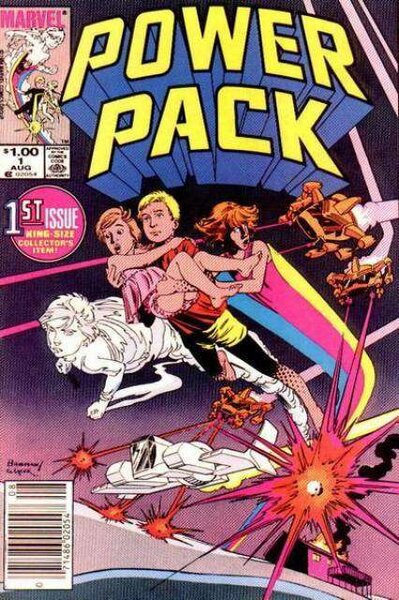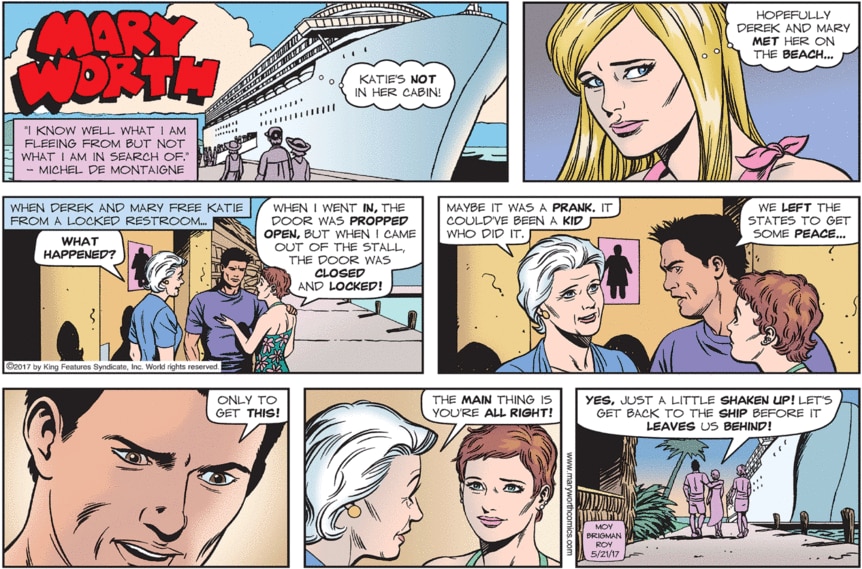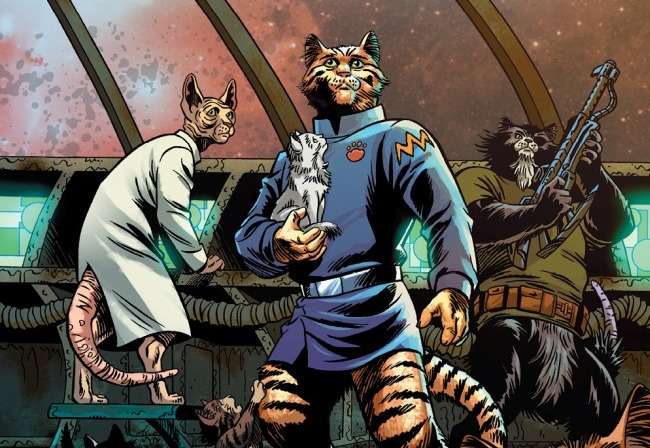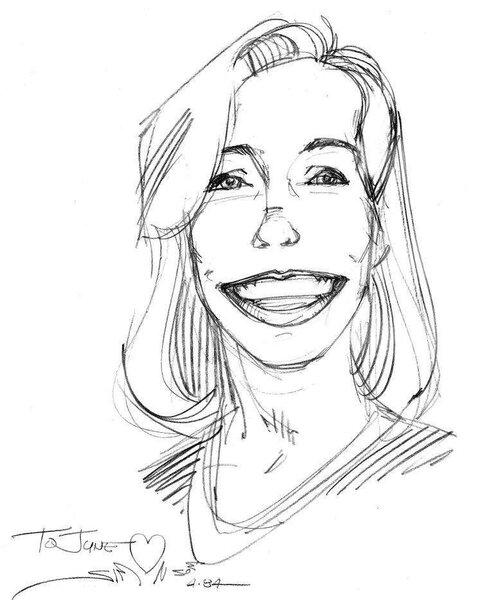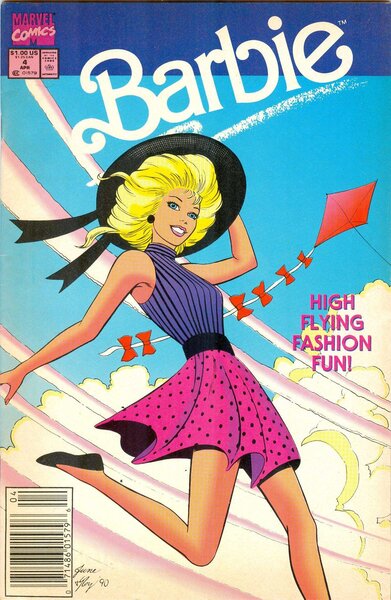Create a free profile to get unlimited access to exclusive videos, sweepstakes, and more!
June Brigman on Power Pack, Mary Worth, and teaching the next generation of comic artists
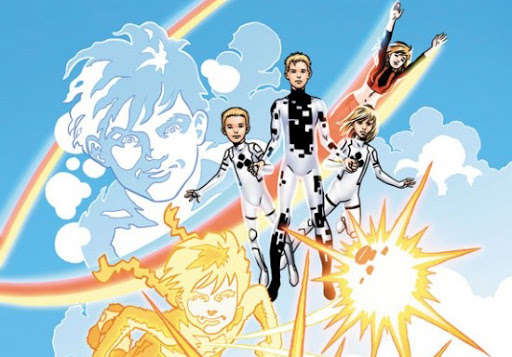
It took me years to actually pay attention to the credits on the page-one splash of comics. After opening up a comic, my eyes would immediately go to the first word balloon or thought box I could find. I couldn't wait for the story to begin.
As I got older and started to realize there were some incredibly talented people creating these 22-page, four-color marvels each and every month, I began to notice the names. Chris Claremont, Keith Pollard, Roger Stern, Ron Wilson, David Michelinie, Marv Wolfman, Carmine Infantino, Paul Smith... I'll stop now because otherwise this entire column will be one long directory of Bronze Age creators.
Know what names I didn't see all that much? Female creators. Sure, by the early 1980s there were women making comics at the Big Two, but not that many. Outside of Jo Duffy's time writing Power Man and Iron Fist and Ramona Fradon drawing The Super Friends comic series, I didn't read a title that had a woman on the creative team.
Until 1984, and Power Pack.
I picked up that first issue at what was then my local comics shop, a store called Starship Enterprise in North Miami (which I'm certain did not pay Paramount for the right to use the name or the corresponding logo on the neon sign outside). The credits for that Power Pack issue featured something incredibly unusual for a Marvel comic: a female creative duo, Louise Simonson and June Brigman.
The series would become an instant hit and to this day retains a devoted fan base. The pair returned for a one-shot PP special last year that was so well-received, it's sparked hope of a new ongoing series featuring the Pack. When I asked Brigman if we will see her and her good friend Simonson team up again on Power Pack, her answer was cryptic and encouraging.
"Sooner than you think," Brigman says. "I can't say much, so let's just say in the near future." That certainly sounds like more Pack is on the way, so color us excited for it, whenever it arrives.
Having co-created the beloved team of young heroes is enough to secure Brigman's place in comics history. But the Atlanta-born artist, and 2014 Inkpot award winner, has done much more than that. I love catching up with the people whose talent helped hook me on comics, so when I had the chance to talk with Brigman, I jumped at the opportunity.
In our interview below, we covered her work-for-hire time at Marvel, when she did everything from PP to Alpha Flight, a great Mary Jane solo story, and even the comic book based on Mattel's Barbie dolls. We also talked about her present-day work as the artist on the newspaper strip Mary Worth, which she does in concert with her husband and inker/colorist/letterer Roy Richardson. Working on a strip like Mary Worth is "a very different challenge from comic books," Brigman explains. She says spending 15 years doing the Brenda Starr strip helped her master the craft and discipline needed to pull it off. "The good thing about a comic strip is it goes on and on. And the bad thing about a strip is it goes on and on," she says. "If you're successful and the strip is successful, it's not going to end."
"If you want a vacation, you're going to have to get ahead by a week or two. If you get sick, too bad. Brenda Starr never took a vacation. Mary Worth never takes a vacation," Brigman says. "The format is more limited. The panel size and arrangement is pretty much set in stone. You really can't change that very much. So you have to find a way to be creative, to tell a story within the restriction of the comic strip format."
She balances her time well enough to also handle the artwork on the current and purr-fectly entertaining Captain Ginger from Ahoy Comics. Read on for more of our discussion.
Captain Ginger is this great comic series that really needs to be read to be fully appreciated. How did this project come about?
Stuart Moore [series writer and former editor/writer for DC and Marvel] came to me. I had worked with Stewart for a company called Teshkeel Comics that published comics in the Middle East. I guess one of the jobs we did called for the characters to visit a cat rescue place and Stuart liked the way I drew cats. So when he came up with the concept of Captain Ginger, he thought of me and sent me his proposal and, of course, I loved it.
I did like seven sample pages, some character designs, and Stuart started shopping it around. It probably took a couple of years. We had people who were very interested, a lot of nibbles but no bites. We were on the verge of Kickstarting it, which I'm really glad didn't happen because it's … the comic is just half of it. The other half [of Kickstarter] is doing all the promotion and rewards. It's like another job in itself. Then Ahoy Comics came along and they went for it and they're such a creatively supportive company to work for. We're really lucky that happened.
It seems you get a lot of jobs because the writers like the way you draw a specific type of character. Cats in this instance, and way back when, Power Pack. Wasn't one of the reasons you got involved with that series was because you drew kids better than almost everybody else?
Pretty much. During that time period, the early eighties, pretty much everything was superhero-oriented. Most artists are really good at drawing the big, you know, hyper muscular superhero types. And I, I honestly, wasn't very good at that. I didn't come from a superhero background and it just so happened. I could draw children and it just so happened. Louise Simonson had this idea for a book that was based on siblings who were between the ages of five and 12. So it just, it was just kind of serendipity that we met when we did. I often tell my students, you can have talent, you can have skills. But a lot of success in comics is just luck, you know? Getting yourself out there and being in the right place at the right time. And I was in the right place at the right time for Power Pack.
You've spent a good amount of years teaching the next generation of artists. That must be rewarding.
I taught at the Kubert School of Cartoon and Graphic Art for two years, and then I taught at the Savannah College of Art and Design at the Atlanta branch for nine years. I took a couple of years off from teaching, but I'm going to be teaching this fall at Kennesaw State University, which is like the largest public art school in the country. So anyway, I always try to do some kind of demo tutorial about drawing children in the classes I teach, because it's very different from drawing adults. You can't just draw tiny adults. It's a whole different set of body proportions and facial proportions and body language. But what I also tell them is find something you can do that's different. The reason I got my big break in comics was because I could draw kids. And at that time that was something different. So don't just draw the same thing everybody else is drawing. Find something you're good at that will set you apart.
When the Power Pack series launched in 1984, comics had pretty much become mainly for teenagers and older readers. But it really stood out because it was a book about kids that wasn't written for young readers, but it was certainly approachable for young readers. The attempt to connect with younger readers felt natural and effortless.
Well that was one of the beautiful things about Weezie's writing. I think effortless is a really good word to describe it. The characters were just so believable. I mean it was kind of a fantasy and science fiction and of course, superhero world that they lived in. But the personalities of the children, the way they handled all these crazy situations they got in was very much like how a kid would really do it. The way they spoke, the way they interacted with each other. I mean, [Weezie] really got that down and, and that's, I think that's why the book was so charming. And why people still care about it.
Were you working off Marvel-style scripts for you, or was Weezie writing full scripts?
It was Marvel style, but it was maybe a more fleshed-out Marvel style. Which was good because I, I was just starting out and kinda got thrown in the deep end. When I started working on Power Pack, I, I really needed all the help I could get. So it was Marvel style.
In terms of the character designs, did Louise already have ideas for some of the characters, like the Snarks? Can you detail your role in bringing those characters to life?
It was. It was really a true co-creation. We'd have this exchange where I would read what she had written and I would draw some drawing. She would look at the drawing and say, "Oh, well, you know, Jack's going to be, he's going to be the tough kid. He's going to be the troublemaker and Julie's going to be the dreamer." So the writing informed the art and then the art also informed the writing. It was really nice. It was really a great working relationship.
I know you get asked this a lot at conventions, but I can't help myself. What's the Power Pack story you're most fond of?
I probably liked the story we did in Issue #16, "The kid who fell to Earth." That's when little Kofi, the teenage chameleon comes to earth and, and Franklin Richards is also in the story. There were just some great moments between Franklin and Katie and Franklin's prescient power made for some dark moments in that story. I felt I was starting to figure out what I was doing by then. Weezie wrote a great story. The interplay between Franklin and Katie, who was kind of resentful of Franklin and the attention he was getting. That was one of the last issues I did. So yeah, that was probably my favorite one.
Why did you guys leave the book? Did you reach a certain point where doing a monthly book became so exhausting you had to move on?
I just had a really hard time from the very beginning drawing a monthly book. I had never done that before. I don't think I had ever done a 22-page comic book before Power Pack. I had just done like little short fill-in type jobs. And as I said, I was really learning on the job. I was 23 years old. I always had trouble meeting the deadlines. Finally I decided I needed to, I just… I just stepped away. I stepped away from it. And for a long time, I stuck to mostly fill-in work. Our editor, Carl Potts, bless his heart. He did everything he could to help me out. It just took me several years to get up to speed where I could keep up with the deadline.
There are a great many stories about the creative excuses comics artists have come up with to justify missing a deadline. Would you do the same with Potts?
No. I tried to kind of give him a little heads up when I was behind. Also, he only lived like 15 minutes from me. He knew where I lived. He knew where to come find me [Laughs]. I remember one time, when I was working on Alpha Flight and I would always come back to Atlanta where my family lived, for Christmas. And I always brought work home with me at Christmas. And the day before we were going to leave, I sat at my parents' dining room table and drew 10 pages in one day. It was just Alpha Flight fighting some monsters and an underground cavern. So it wasn't like I had to draw cityscapes or anything, but I got it done. And I called Carl to tell him I was going to drop off the pages. He was expecting bad news. He was expecting me to say, "Gosh, Carl, I'm sorry, but I can't get this done before Christmas." And when I told him I was gonna drop off the last 10 pages at his house, he was so shocked. It was like a Christmas miracle. Honest to God, I don't know how I did it. I've never been able to repeat that again.
When you were breaking into the business, comics was very much a boy's club. Did that impact you in terms of getting work? Was there a book that you wanted to do that you couldn't get?
Not really. Like I said, my style just wasn't suited to everything. After Power Pack, I did the She-Hulk: Ceremony mini-series with Dwayne McDuffie and that was a blast. I loved, I loved drawing that character. I did a fill-in issue of the X-Men (#204 in 1986). It wasn't a very good job, I thought. And I got to work on Barbie, which wasn't a great experience. It was hard working with Mattel. It would have been fine if Mattel hadn't been so weird about the doll as they called it. They didn't call her Barbie. She was just the doll.
I know licensed books have their own challenges, but was Barbie that challenging? Why?
Well, I think it's hard because you weren't just working with Marvel, but with Mattel, mainly. Mattel had final word on everything and nobody there had a comic book background. So for example, when I did a cover, I would do a cover rough with my cover. Maybe in that cover rough, I drew Barbie with four eyelashes instead of three. Wow. They would reject it. That's the sort of mentality you were dealing with. Or if the story had Barbie running on the beach and maybe her torso is twisting slightly to catch a beach ball, they would say, "No, no, no, the doll can't do that." So I couldn't draw Barbie moving like that because the doll didn't move that way.
What kind of advice do you give your students or aspiring comic creators you meet at conventions?
It depends. If it's a kid, I just say, keep drawing, draw what you like to draw. Maybe play with color or get some how-to books. If it's someone who's a teenager, maybe heading towards college, I'll get a little more specific about what they need to work on their portfolio. A lot of people come up and they just show their character design and I'm like, well, that's nice. But if you want to draw comics, you need to practice drawing comics. You need to study a lot more than just how to draw a character. If it's an adult, I might be a little harder on them. If I see a lack of potential, I'll say, well, you know, keep having fun with this and do what you enjoy. But, I would never say, "don't quit your day job." My advice is going to be tempered by the age and skill level of that person.
The issue of harassment in comics is a major talking point about the industry at the moment. When you get approached by female artists looking to break into the business, what do you tell them?
I do see a lot more young women now. When I started there just wasn't really that much interest. But the popularity of manga and anime has really brought a lot of young women into the business. When I'm teaching, I would say my classes are, 50%, if not more, young women. Most of the female students aren't really interested in drawing superheroes. So I honestly don't know how much influence the Marvel and DC movies have had on that.
It's really weird. I did not experience harassment when I was coming along, I was very fortunate. I think social media is… a big reason why women are experiencing all kinds of nastiness and sexism and bias. I think [some] men in comics may feel threatened by women in the business because we are such a force now. It's a hard thing to advise about and it's such an individual issue. For me, I see some comments and nastiness on social media and I don't engage. I don't do Twitter. I'm on Instagram and Facebook, but I generally, you know, I don't mix it up. But it's different for me because I'm almost 60 years old.
I think most of the people in comics are good people. They're nice people. It's still a relatively small community. And the times I've seen in social media, when some, somebody really is just being an a**hole, they, they get jumped on. I mean, everybody comes to the defense of whoever is being attacked. And the jerk is shut down. So that's encouraging.
Got a favorite comics creator you'd like me to catch up with? Find me on Twitter/Facebook/Instagram and let me know!
Don't forget that Behind the Panel is a multi-platform series that can help keep you entertained during these strange and stressful times we're in. Our video series is loaded with my in-depth interviews with amazing comic book creators. The Behind the Panel podcast is an audio documentary series that provides unique insight into your favorite creators and stories. Check 'em out, we think you'll enjoy them.
The views and opinions expressed in this article are the author's and do not necessarily reflect those of SYFY WIRE, SYFY, or NBCUniversal.
